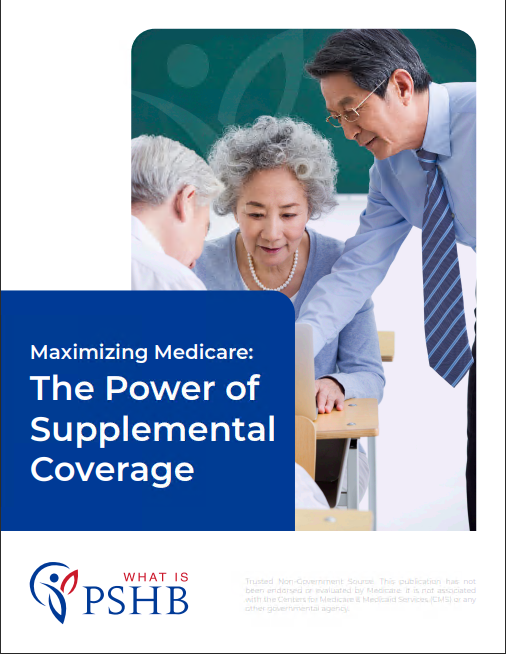Key Takeaways
-
Understanding how Medicare and PSHB work together is crucial to avoiding gaps in your healthcare and unexpected out-of-pocket costs.
-
Your decisions around Medicare Part B enrollment can directly affect your access to PSHB benefits, especially after age 65.
The Coordination Question That Shapes Your Coverage
If you’re a retired Postal Service worker or approaching retirement, you’ve likely heard about the shift from the Federal Employees Health Benefits (FEHB) program to the Postal Service Health Benefits (PSHB) program. Now that it’s 2025, this change is fully in place—and with it comes a new set of rules about how your PSHB coverage interacts with Medicare. These coordination rules are not optional to understand; they determine whether you’ll receive full benefits, face delays in claims, or potentially get stuck with higher out-of-pocket costs.
Who Must Enroll in Medicare Part B (And Who Doesn’t)
As of 2025, certain Postal Service annuitants and their family members must enroll in Medicare Part B to remain eligible for full PSHB coverage. Here’s who falls under that rule:
-
If you turned 65 before January 1, 2025 and were already retired, you’re exempt.
-
If you were still working for the Postal Service on January 1, 2025 and you were age 64 or older, you’re also exempt.
-
If you are Medicare-eligible due to disability or age and retired after January 1, 2025, you’re required to enroll in Medicare Part B.
This rule is a fundamental shift. Under FEHB, enrolling in Medicare Part B was optional. Under PSHB, it’s now mandatory for most Medicare-eligible enrollees who meet the criteria above.
Why This Coordination Rule Matters
PSHB plans are designed to coordinate with Medicare. When you are enrolled in both PSHB and Medicare Parts A and B:
-
Medicare pays first, covering eligible expenses.
-
PSHB pays second, often covering your deductibles, coinsurance, and copayments.
This coordination can significantly reduce your out-of-pocket expenses—but only if you’re enrolled in both parts of Medicare.
If you’re eligible for Medicare Part B but fail to enroll (without qualifying for an exemption), you could lose access to your PSHB plan altogether. That’s not just a policy risk—it’s a health and financial risk.
Enrollment Timing: When You Need to Act
Understanding the timing of Medicare enrollment is just as important as knowing the rules. If you’re turning 65 this year, you’re in your Initial Enrollment Period (IEP):
-
Starts 3 months before your 65th birthday month
-
Includes the month of your 65th birthday
-
Ends 3 months after your birthday month
If you miss your IEP, you can enroll during the General Enrollment Period (GEP) from January 1 to March 31 each year—but coverage won’t start until July, and you may face lifetime late penalties.
There are also Special Enrollment Periods (SEPs) for those who delayed Medicare because they were still working and covered by employer insurance. If this applies to you, make sure your Medicare enrollment begins as soon as your employment ends to avoid gaps.
PSHB and Medicare Part A: Already Built In
Nearly everyone qualifies for premium-free Medicare Part A at age 65. If you’ve worked 10 years (40 quarters) and paid Medicare taxes, you are automatically eligible.
Even if you’re not required to enroll in Part B, you should still enroll in Part A. It covers hospital stays, skilled nursing care, and some home health services. When used alongside PSHB, your inpatient costs are much lower than with PSHB alone.
How Your PSHB Benefits Work When Medicare Pays First
Once you have Medicare Part A and B:
-
You generally don’t pay deductibles for services Medicare covers.
-
Most copayments and coinsurance are reduced or waived entirely.
-
Out-of-pocket limits under PSHB become easier to avoid.
This is because PSHB treats Medicare as your primary insurance. Your PSHB plan often waives its own cost-sharing when Medicare has already paid.
Without Medicare Part B, however, PSHB becomes your primary coverage. That changes the cost equation entirely—you become responsible for higher deductibles, copays, and coinsurance.
Prescription Drug Coverage: Integrated with Medicare Part D
Another change in 2025 is that PSHB plans for Medicare-eligible retirees now include prescription drug coverage through Medicare Part D, delivered via a group plan known as an EGWP (Employer Group Waiver Plan).
This means:
-
Your drug costs now follow the Medicare Part D structure
-
You benefit from the new $2,000 annual cap on out-of-pocket prescription drug costs
-
You are automatically enrolled in this plan unless you opt out (which is not recommended)
Be aware: if you opt out of the Part D drug coverage, you may lose all PSHB drug benefits and face a Part D late enrollment penalty later.
Late Enrollment Penalties Can Haunt You for Life
If you delay Medicare Part B without a valid reason, you’ll face a 10% penalty for each 12-month period you delay enrollment. This penalty is added to your Part B premium permanently.
Similarly, delaying Medicare Part D enrollment can result in a separate late penalty for as long as you have Part D coverage in the future.
These penalties not only raise your future premiums but can also trigger coordination issues with your PSHB plan.
What Happens If You Live Overseas?
If you’re living abroad and don’t need Medicare services, you might qualify for an exemption from the PSHB Medicare Part B requirement. However:
-
You must officially reside outside the United States
-
You may need to submit documentation proving foreign residency
Even then, if you return to the U.S. and become Medicare-eligible while enrolled in PSHB, you’ll be expected to enroll in Part B to keep full coverage.
Coordination After You Retire Mid-Year
If you retire during the year and are newly Medicare-eligible, the coordination between your PSHB plan and Medicare depends on whether you were actively working on January 1, 2025.
-
If yes, and you retire later in 2025, you may qualify for a temporary grace period to enroll in Medicare Part B.
-
If not, and you miss enrollment, you risk losing full PSHB benefits.
Plan accordingly. The moment your job ends, Medicare becomes your primary payer if you’re 65 or older.
What If You’re Still Working After 65?
If you’re actively employed and covered by PSHB through your job, you can delay Medicare Part B enrollment. Once you stop working, you’ll have an 8-month SEP to enroll in Part B without penalty.
This is especially important for Postal employees delaying retirement. Once your employment ends, you must act quickly to avoid coverage disruptions and late penalties.
Timing Is Everything: Avoiding a Gap
Missing the right enrollment window—even by a month—can create significant issues:
-
Delayed Medicare coverage until July (if you use the GEP)
-
Ineligibility for PSHB drug coverage if you opt out of Part D
-
Permanent penalties on Part B and D premiums
Your best protection is to keep a personal checklist:
-
Confirm when you’re eligible for Medicare
-
Review whether you’re exempt from the Part B requirement
-
Enroll during IEP or SEP (not GEP)
-
Ensure your Medicare start date aligns with your retirement
PSHB Plans Assume Medicare Will Pay First
The structure of PSHB in 2025 reflects the expectation that Medicare will act as the primary insurer once you’re eligible. That means PSHB plans may:
-
Base their cost-sharing on the assumption that Medicare has paid
-
Offer enhanced benefits only if you have both Part A and B
-
Limit or deny some reimbursements if Medicare wasn’t billed first
If you don’t have Medicare when required, you could find yourself paying the full cost for services PSHB would have otherwise covered secondarily.
Your Coordination Strategy Defines Your Retirement Experience
If you understand the coordination rules, you’ll likely enjoy streamlined care, lower out-of-pocket costs, and fewer administrative headaches. But if you misstep—miss an enrollment window, ignore the Part D requirement, or fail to coordinate coverage—you could face higher costs, reduced benefits, or outright loss of coverage.
This isn’t just fine print. It’s a core part of your retirement strategy.
Don’t Gamble with Your Coverage: Get Expert Help
Medicare and PSHB coordination is more than a checklist—it’s a decision that can affect your care access and finances for the rest of your life. If you’re unsure whether you meet the enrollment requirements or how to time your transition, don’t guess.
Speak with a licensed agent listed on this website to help you clarify your Medicare responsibilities, evaluate your PSHB options, and ensure your retirement coverage stays secure.









